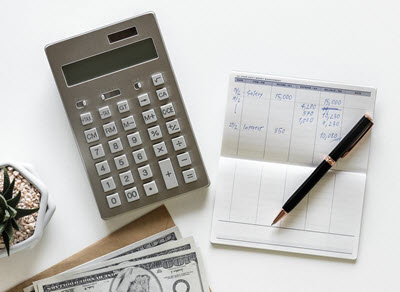The U.S. Department of Education runs two programs for federal student loans:
- The William D. Ford Federal Direct Loan Program is the largest federal student loan program. Under this program, the student borrows money directly from the U.S. Department of Education.
- The Federal Perkins Loan ProgramThis is a school-based loan program for undergraduate and graduate students with exceptional financial need. Under this program, the student borrows money from the school. For more information about this program, contacting the school’s financial aid office is a good idea.
Types of loans available under the Willia D. Ford Federal Direct Loan Program
Direct Subsidized Loans

To obtain this loan, the student must demonstrate financial need.
Direct subsidized loans are available for eligible undergraduate students who need help paying for the costs of higher education at a college or career school participating in the Direct Loan Program.
You must be enrolled at least half-time at school to qualify to apply for a direct subsidized loan.
In most cases, only students enrolled in a program that leads to a degree or certificate awarded by the school will be approved for a direct subsidized loan, but there are certain exceptions.
How much can I borrow?
It is up to your school to determine how much you may borrow as long as the amount does not exceed your financial need. Your financial situation and the cost of tuition determine your financial needs. If you own stocks are other financial instruments you might be forced to sell these before you can qualify for aid. Speculative financial instruments such as binary options, Forex certificates, and CFDs are usually not considered assets and will not affect your perceived financial need. Unleveraged Forex Holdings might however be considered assets and might affect you perceived financial needs. Visit DayTrading.com to learn more about different Forex Instruments to get an understanding on whether they are assets or not.
How much interest do I pay while I’m still in school?
For a direct subsidized loan, the U.S. Department of Education will pay the interest for you while you study, provided that you fulfil certain requirements. One of these requirements is to enrol at least half-time at school.
When you leave school, the department will continue to pay the interest for you during a 6 month grace period. (Important: This is not true for loans first disbursed between July 1, 2012, and July 1 2014.)
Direct Unsubsidized Loans
The student doesn’t have to demonstrate financial need to obtain this loan.

Direct unsubsidized loans are available for eligible undergraduate, graduate and professional students at schools that participate in the Direct Loan Program.
You must be enrolled at least half-time at school to qualify for a direct unsubsidized loan.
In most cases, only students enrolled in a program that leads to a degree or certificate awarded by the school will be approved for a direct unsubsidized loan, but there are certain exceptions.
How much can I borrow?
It is up to your school to decide how much you can borrow based on your cost of attendance and the size of any other financial aid that you are receiving.
How much interest do I pay while I’m still in school?
Since this is an unsubsidized loan, the U.S. Department of Education will not pay your interest while studying.
If you don’t make interest payments while you are still in school, the interest will be added to the principal amount of your loan. This is also true for interest payments not made during grace periods, deferment or forbearance (when you are still in school or afterwards).
Is there any moral clause?
No, there is no moral clause in the FDLP loan program. You are allowed to receive the loan even if you engage in or have engaged in activities such as gambling or excessive alcohol consumption. The program is open to people with previous convictions as long as their debt to society has been paid. A criminal record can, however, in some cases, make it harder to get accepted.
Direct PLUS Loans
This loan can be used to cover education costs not covered by other financial aid.
Direct PLUS Loans are available for eligible graduate students and professional students. It is also available for parents of dependent undergraduate students.
Direct Consolidation Loans
With a direct consolidation loan, you combine all of your eligible federal student loans into a single loan with a single loan servicer. This will reduce your total loan cost and will make the loan easier to administrate since you only need to pay on bill each month.
